Collaborations

2025.02.07
Teaming Up with Top Creatives to Innovate Craftsmanship! (Part 2)
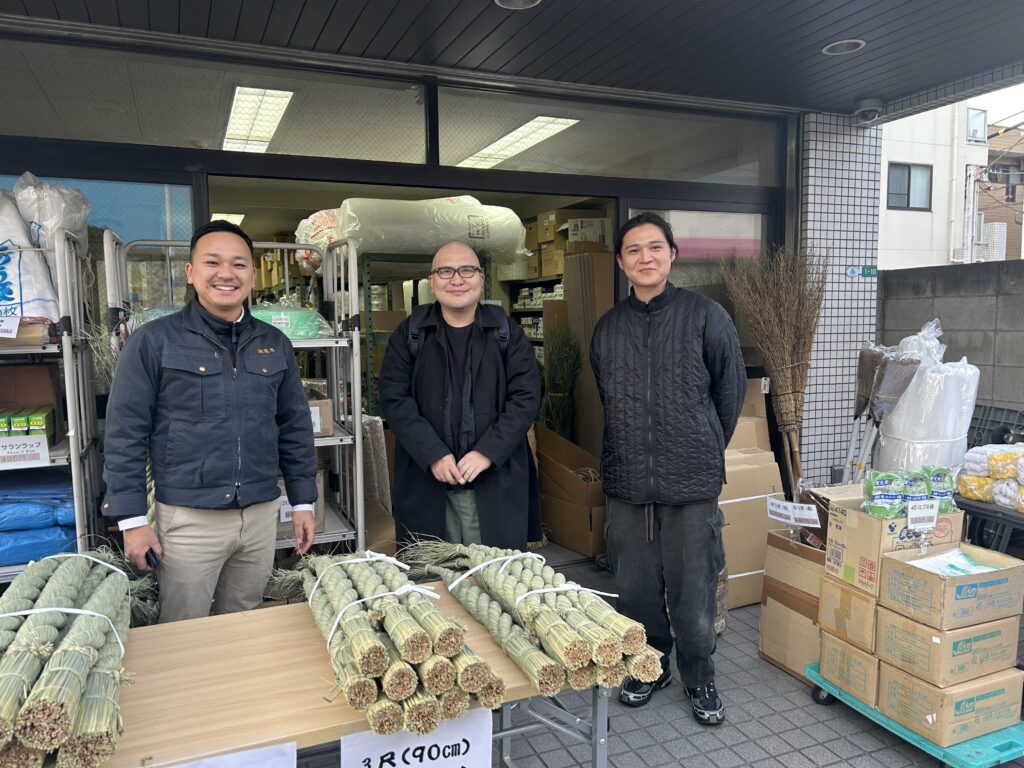
In this collaborative project, Edogawa Collection partners are teaming up with top creators to develop brand-new products. Each product is imbued with the exceptional skills of our partner companies’ craftspeople to bring original Edogawa Collection items to life. In this installment, we bring you the latest updates!
It’s a sunny day in December 2024, and Yanagi Shunsuke and Nakagawa Takumu of MUJI Ginza are back in Edogawa City. Their mission: a second round of product development meetings.
The three Edogawa-based companies they’re collaborating with—Nawachu, specialists in shimenawa (sacred straw ropes); Takahashi Shibori Kogyo, experts in metal spinning; and Shinohara Furin, makers of traditional Edo furin wind chimes—had been hard at work on the prototypes discussed at their previous meeting. “I’m really looking forward to seeing what kind of items everyone’s been working on,” Yanagi beams.
First stop: Nawachu.
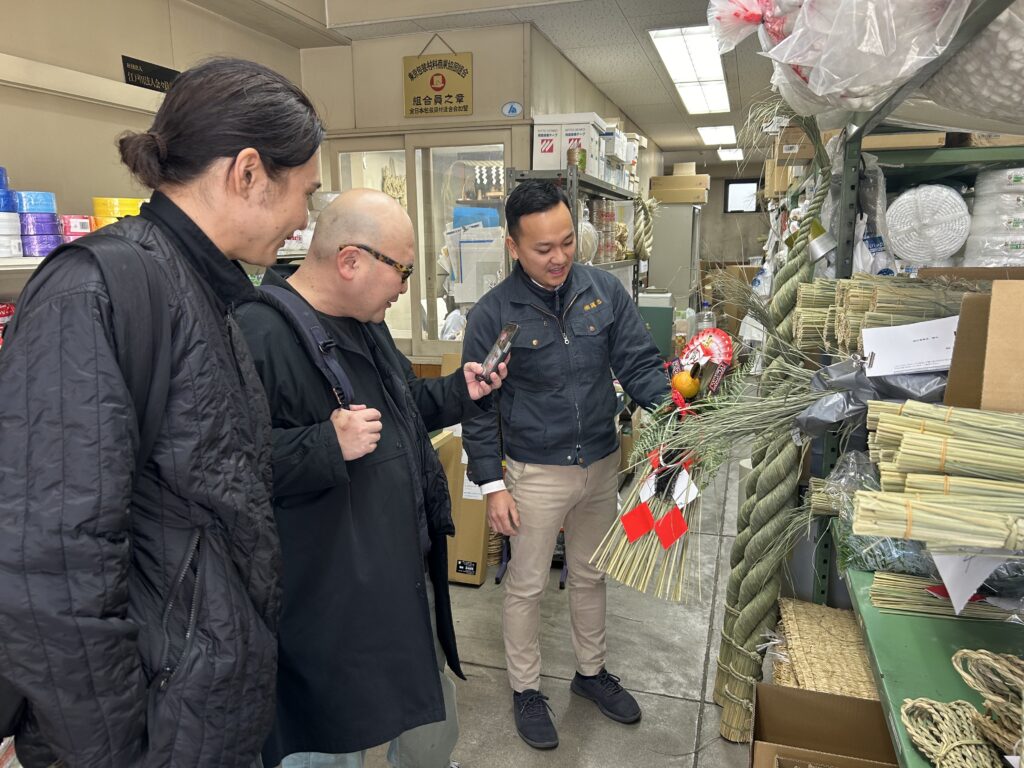
Amid the year-end rush of shimenawa shipments, Kubishiro Mitsunobu (right) of Nawachu takes a moment to introduce some of their stunning creations to a fascinated Yanagi (center) and Nakagawa (left).
At the last meeting, Kubishiro had passionately expressed his wish to help pass down shimenawa traditions to younger generations and a wider audience. In response, Yanagi and Nakagawa proposed an idea: a shimenawa that users could decorate themselves.
“What if, instead of selling a finished product, we offered a kit that lets people create their own original shimenawa? That way, they’d get to engage with it hands-on, and maybe even feel more connected to it as an object to display in their home,” suggested Yanagi.
Taking the idea to heart, Kubishiro created a prototype: a kit featuring a slender style of shimenawa called goboshime, paired with decorative rice stalks. As the two elements come separately, users are to free to arrange them as they wish.
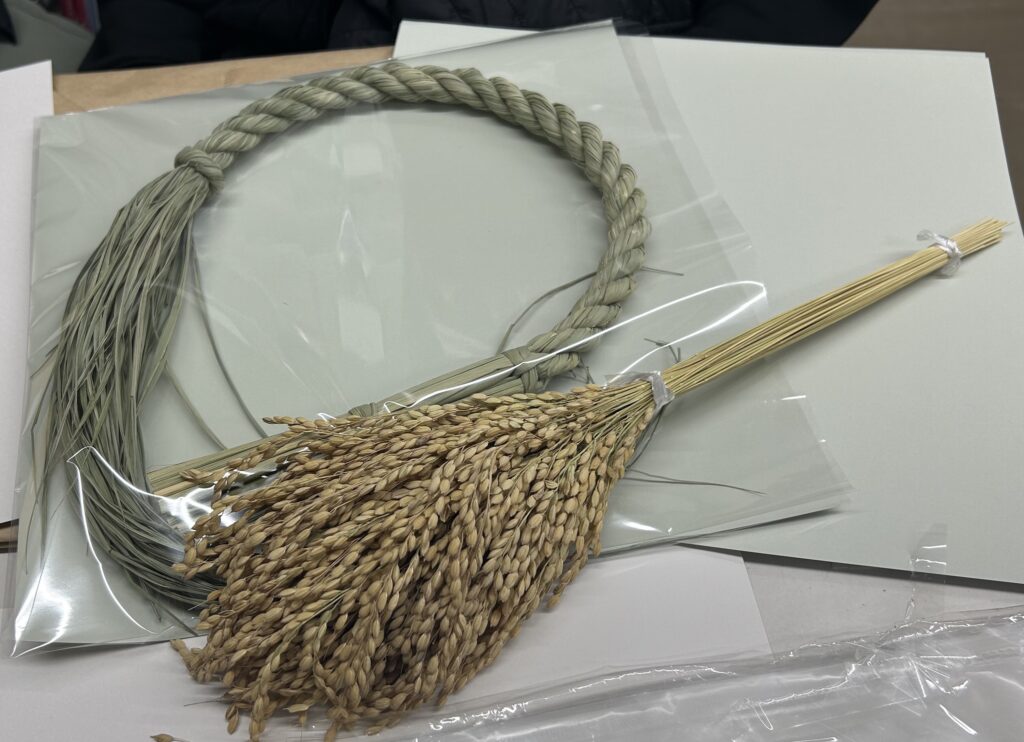
A set of goboshime rope and decorative rice stalks.
“In recent years, fewer and fewer households are displaying shimenawa at New Year’s. But shimenawa are part of Japan’s cultural heritage, passed down since the mythical times. If we want to keep that tradition alive, we need to help people feel closer to it,” said Kubishiro. “I think this project could be just the thing to spark that connection. The kit is designed so anyone can make their own original shimenawa, so it’s not just for young people—parents can enjoy making them with their kids, too.”
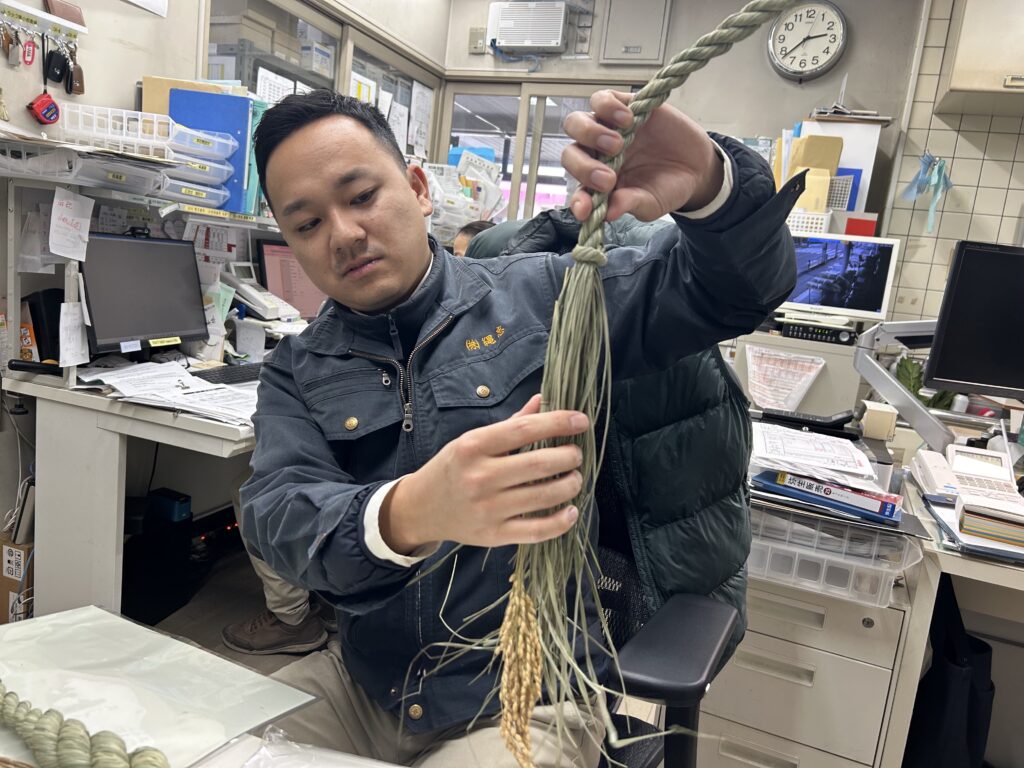
Kubishiro demonstrates the demanding process of rope-shaping.
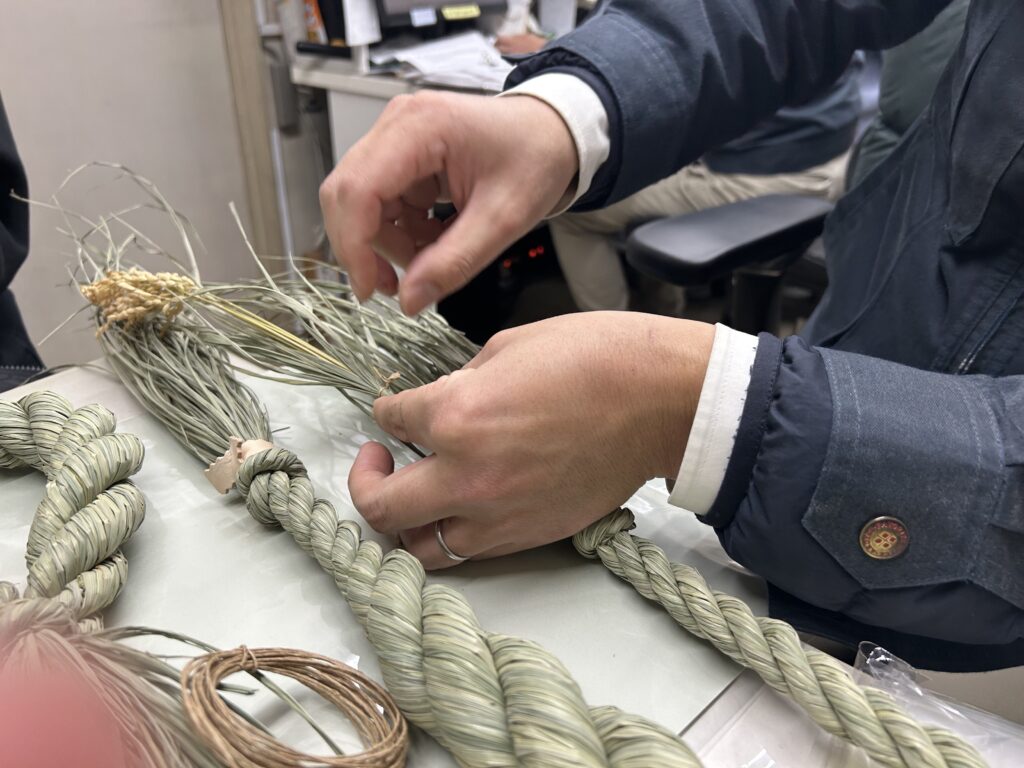
“We’ll also include string to make assembly easy for anyone,” adds Kubishiro.
“Getting to make something with your own hands really builds a sense of attachment,” noted Nakagawa.
“And you’re not limited to just rice stalks—you could mix in seasonal flowers or shop-bought ornaments,” added Yanagi. “That way, shimenawa could become a year-round interior decoration, not just for New Year’s.”
“Talking things through with you both helped clarify the concept,” said Kubishiro. “Now it’s time to fine-tune the details.” It’ll be exciting to see how the final version turns out!
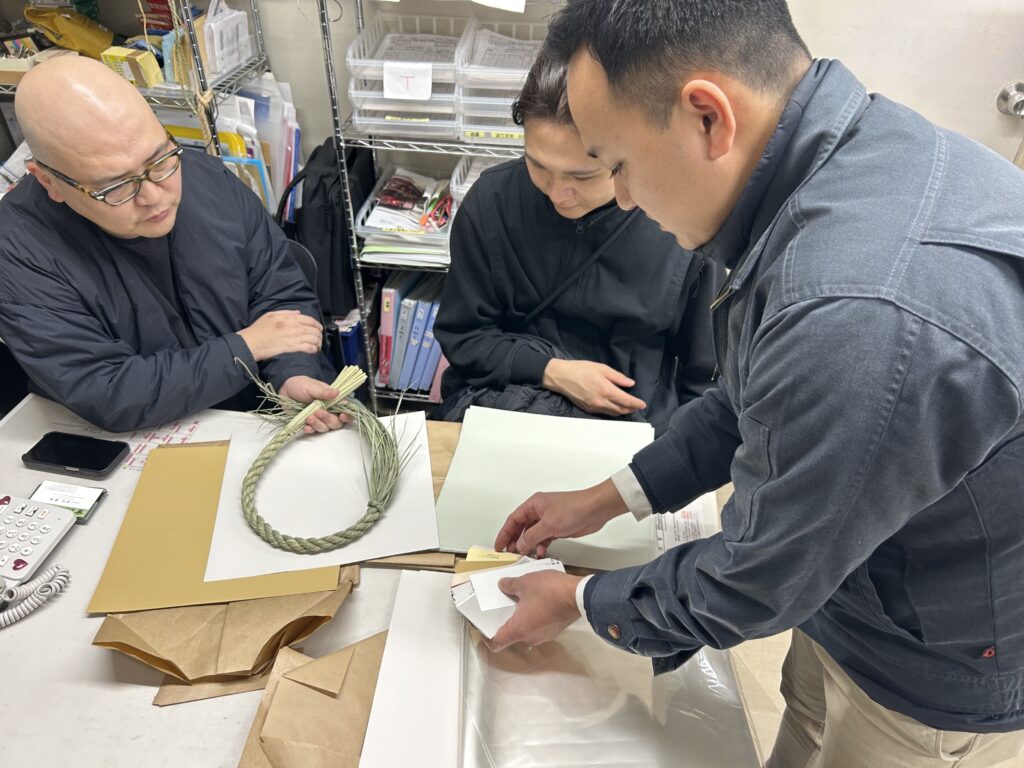
“We want to be thoughtful about the packaging and the name, too—anything that helps draw people in,” says Kubishiro.
Next, the team visited Takahashi Shibori Kogyo. At their last meeting, the conversation took an exciting turn toward pet products. MUJI had just launched a new pet line at the end of 2023, and as it happened, Nakagawa’s family has a poodle—so talk naturally turned to dog bowls.
Takahashi Shibori Kogyo’s in-house brand TASHIKA already makes custom dog bowls, so this was a perfect match. With the team’s input, they began refining the product into a new, Edogawa Collection original.
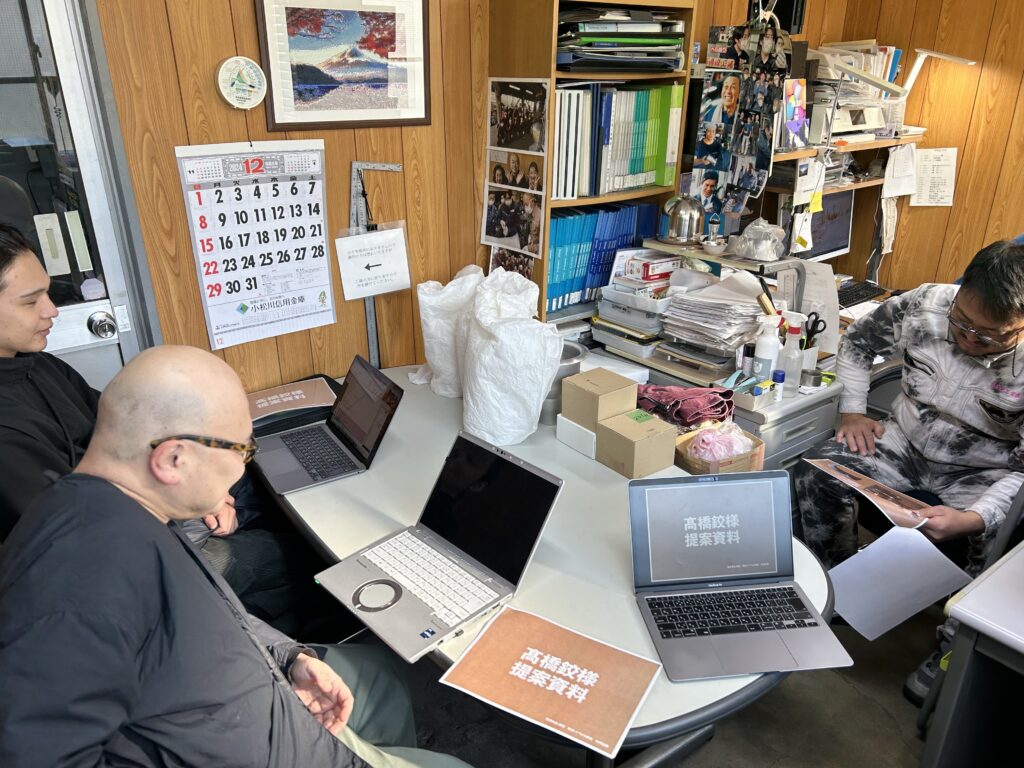
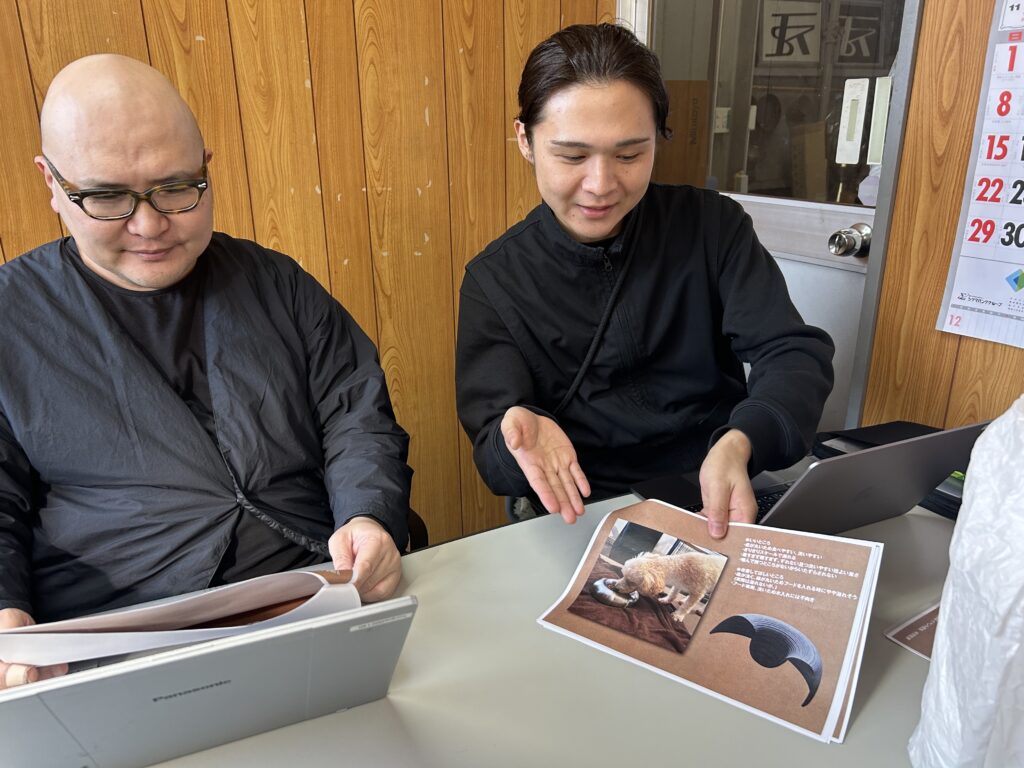
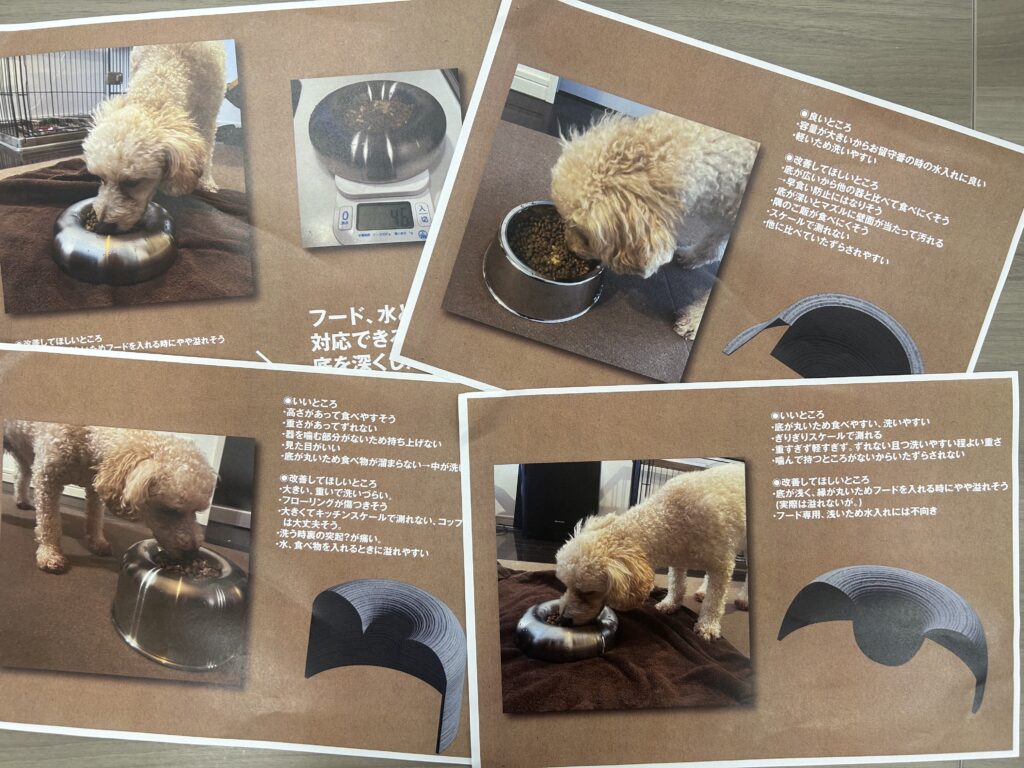
Nakagawa’s presentation materials. He borrowed a tray from the TASHIKA brand in advance and observed how his own dog responded to it.
“Depending on breed, a dog’s nose height varies, so some trays are easier to eat from than others. Things like whether the tray slides around or damages the floor are also concerns for pet owners. Takahashi Shibori Kogyo’s craftsmanship has resulted in a bowl that already has a beautiful, stylish form. Now we just want to refine the details to make it truly ideal for both dogs and their owners,” said Nakagawa.
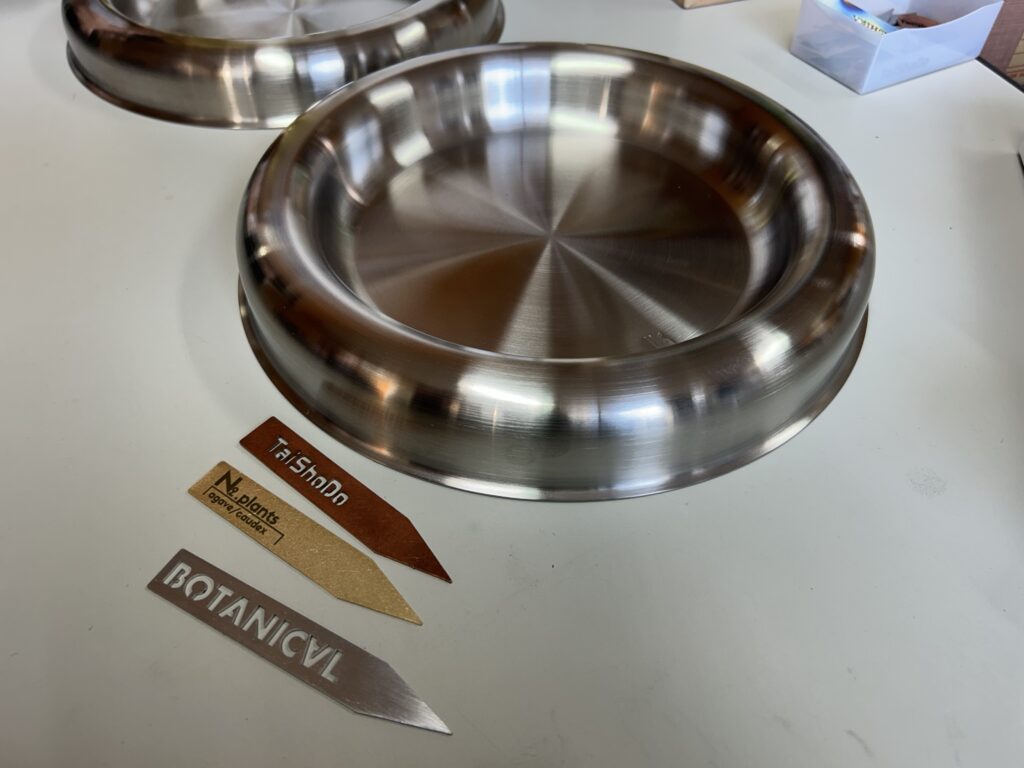
“At the end of the day, I want to make something pet owners will be thrilled with,” said President Takahashi—so they also decided to add a custom nameplate made of copper with the pet’s name to the tray!
Taking Nakagawa’s suggestions into account, the team exchanged ideas about the bowl’s shape, size, and height. One new idea was to include a copper name tag featuring the pet’s name—something that would help create a stronger personal connection and ensure long-term use.
“Most dog bowls sold at pet shops don’t really spark joy,” said President Takahashi. “We want to create something for pet owners with an eye for detail to instantly say, ‘Now this is what I was after!’—something cool, stylish, and unlike anything else out there.”
A dog bowl co-created by the ever-innovative President Takahashi and the MUJI team—how will it turn out? We can’t wait to see!
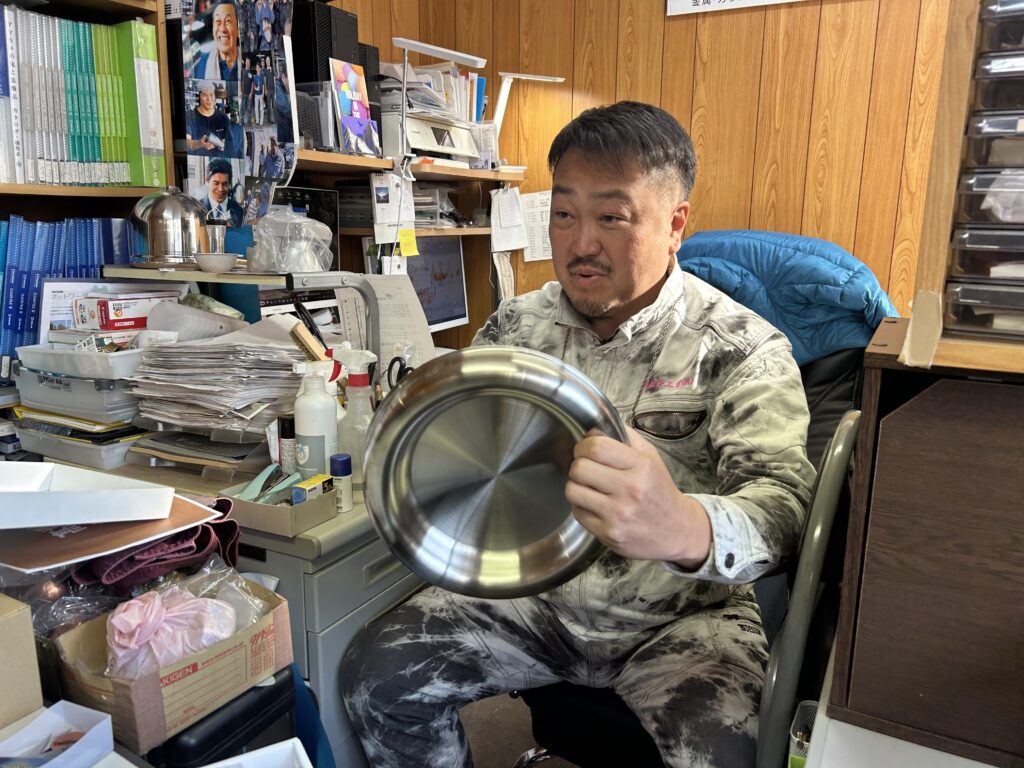
“We’re going to create a dog bowl unlike any other,” declared President Takahashi.
Last on the visit list was Shinohara Furin, makers of Edo furin wind chimes. Yanagi was particularly drawn to the vivid, traditional red chimes and their roots in history.
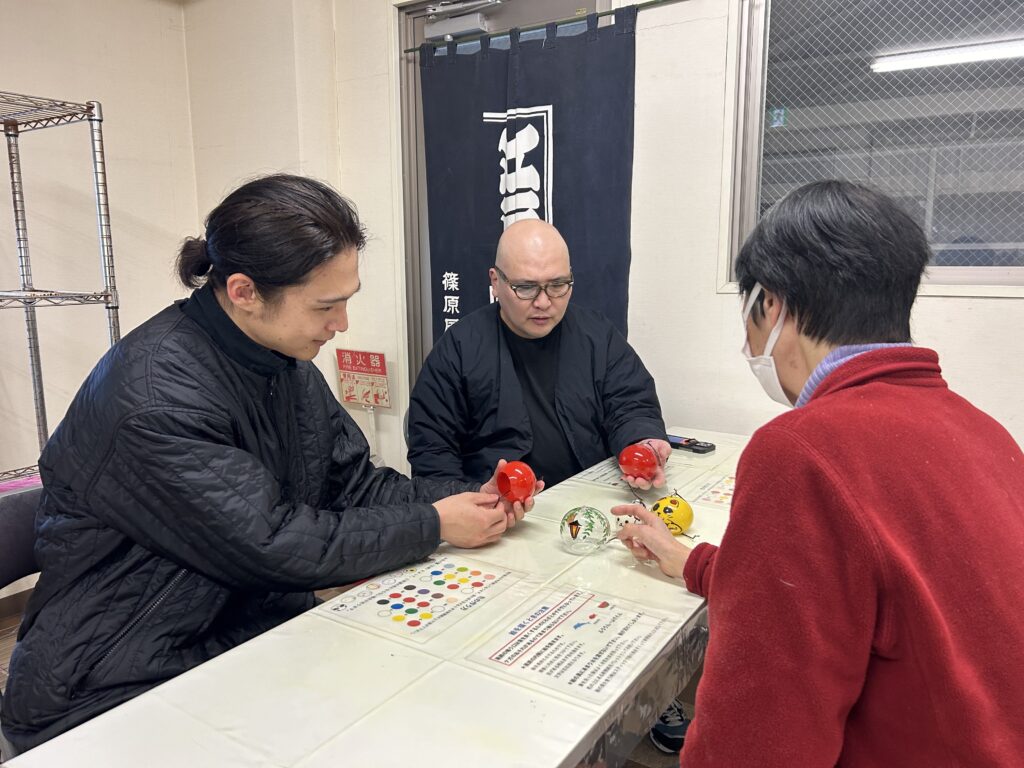
“I felt a real connection with the wind chime design inspired by Ginza, which is also where we happen to work,” said Yanagi.
“Historically speaking, wind chimes originally came from China during the Heian period and were hung from eaves as charms to ward off evil. By coincidence, our MUJI store is located in Ginza—so we felt a natural connection. That’s why I strongly wanted to ask Shinohara to create a wind chime inspired by Ginza,” said Yanagi.
Shinohara quickly got to work and produced a sample design. The key features: a traditional, vermilion-painted chime adorned with illustrations of a willow tree and a gas lamp.
“I kept the gas lamp in solid yellow so it would stand out against the red background. And I modeled the willow leaves on the actual shidareyanagi weeping willows planted in Ginza,” explained Shinohara.

A prototype of the wind chime.
“With its form, color palette, and especially the charming illustrations of the willow and gas lamp, this is turning into something really special,” said Yanagi.
“To match Ginza’s sense of elegance, I’d love to put some care into the box packaging as well,” added Nakagawa.
Unlike the usual refreshing image of wind chimes, the warm red backdrop gives this one a cozy, charming feel. It’s shaping up to be a wind chime that tourists in Ginza will definitely want to take home as a souvenir!
Next time: the finished products are finally revealed!
We’ll be sharing details about the February event soon—don’t miss the chance to come see them in person!
次回はいよいよ完成品の発表!
2月のイベント情報も近々公開するので、ぜひ足を運んで実物を見てくださいね!
